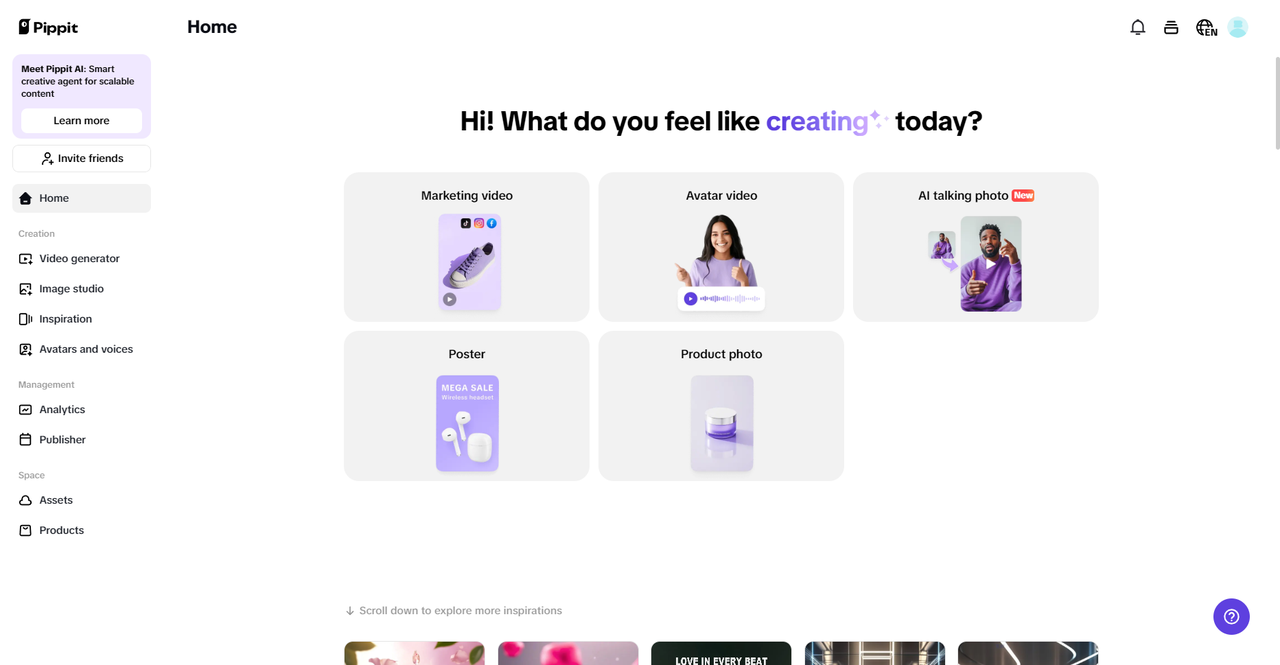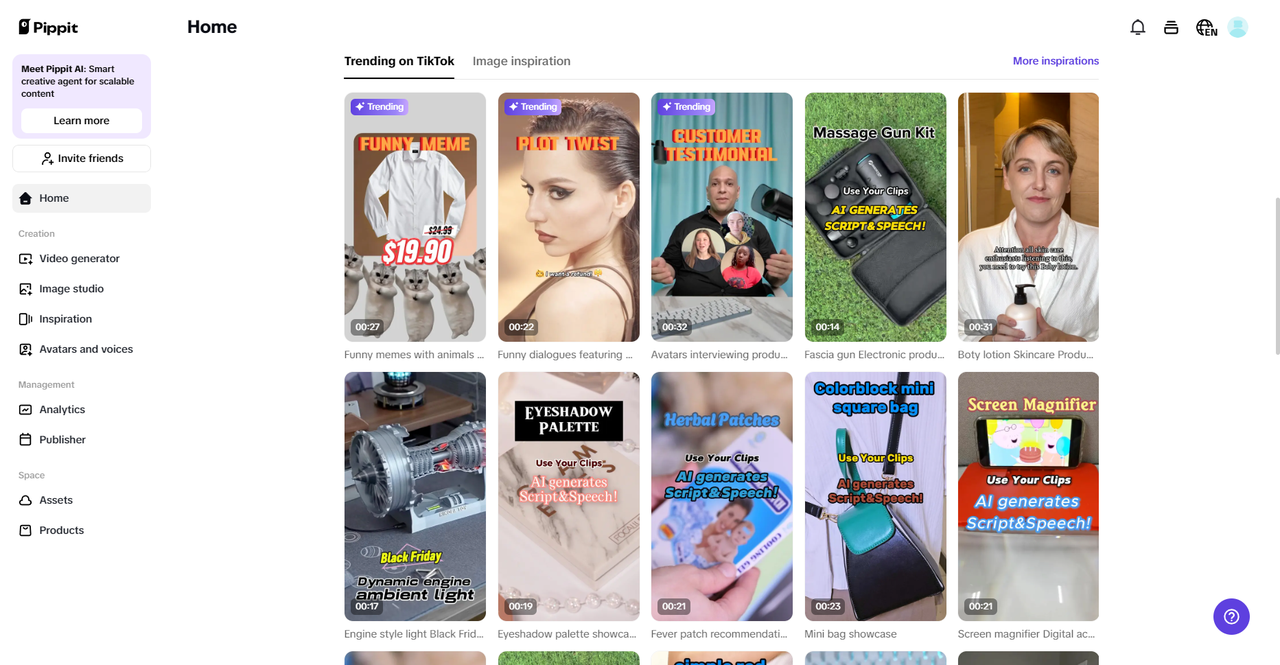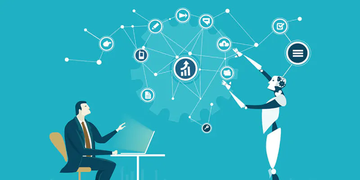In today’s competitive business landscape, productivity is paramount, and artificial intelligence (AI) is emerging as a game-changer. According to PwC, AI has the potential to boost employee productivity by 40% by 2035, with 64% of businesses already expecting significant gains from its adoption. AI refers to systems capable of mimicking human intelligence to automate tasks, analyze data, and make decisions. By streamlining workflows and enabling employees to focus on high-impact work, AI is transforming workplaces across industries. From automating repetitive tasks to enhancing decision-making, AI is revolutionizing key areas like HR, customer service, and operations. Explore how tools like a free AI video generator can further unlock efficiency.

Understanding AI’s Impact on Workplace Productivity
How AI Differs From Traditional Automation
Traditional automation relies on pre-defined rules and repetitive workflows, excelling in tasks that require consistency and precision. However, it lacks the ability to adapt or learn from new data. In contrast, AI introduces intelligence to automation by learning from experience, adapting to new situations, and making decisions based on real-time data. For example, while traditional automation might follow a static script for customer service, AI-powered systems like chatbots can analyze user queries and provide tailored responses, continuously improving over time.

Broad Categories of AI Applications Relevant to Workplace Productivity:
-
Task automation: AI-driven task automation goes beyond simple rule-based processes by handling complex and dynamic tasks. Tools like Robotic Process Automation (RPA) powered by AI can automate invoice processing, data entry, and even decision-making processes. This frees employees from repetitive tasks, allowing them to focus on strategic work.
-
Data analysis and insights: AI excels at processing vast amounts of data quickly and accurately. Machine learning models can identify trends, generate predictions, and extract actionable insights from complex datasets. Businesses use AI for predictive analytics in supply chain management or customer behavior forecasting, leading to smarter decision-making and optimized operations.
-
Communication and collaboration: AI enhances workplace communication through tools like intelligent email filtering, automated meeting summaries, and real-time language translation. These features streamline collaboration across teams, especially in hybrid or global work environments. Additionally, AI-powered platforms can recommend relevant resources or connections based on project needs.
-
Personalized assistance: AI-powered personal assistants such as Microsoft’s Cortana or Google Assistant improve productivity by managing schedules, setting reminders, and automating routine tasks like email drafting. These tools leverage natural language processing (NLP) to understand user preferences and deliver personalized recommendations.
Benefits of Leveraging AI For Productivity
-
Increased efficiency and output: By automating routine tasks, AI significantly accelerates workflows, allowing teams to accomplish more in less time with minimal effort. Tools like text to video AI can streamline content creation, saving hours for marketing teams.

-
Reduced errors and improved accuracy: AI minimizes the risk of human error in repetitive processes, ensuring that outputs are consistent and reliable across various tasks.
-
Cost savings through optimized processes: Implementing AI-driven automation can lead to substantial reductions in labor costs while enhancing overall operational efficiency.
-
Better decision-making based on data insights: With advanced analytics capabilities, AI equips businesses with actionable intelligence, enabling informed strategic planning and timely decision-making.
-
Improved employee morale: By relieving employees of mundane tasks, AI allows them to engage in more creative and high-value activities, fostering a more satisfying work environment.
AI-Powered Automation: Streamlining Workflows
AI-driven automation is transforming workflows across various departments by enhancing efficiency and reducing manual effort. Here are specific examples of how AI is being utilized in different sectors:
HR
In Human Resources, AI-powered recruitment tools streamline the hiring process by screening resumes, scheduling interviews, and analyzing employee performance. These tools can effectively evaluate candidates’ online presence, educational backgrounds, and work experiences to predict their potential success in a role. Many of these systems are optimized to parse and evaluate a modern cv template, making it easier for qualified candidates to be noticed. Solutions like cvme equip recruitment agencies with advanced AI tools to efficiently manage candidate data, assess qualifications, and match top talent to the right roles. By minimizing unconscious bias through objective algorithms, AI enhances decision-making and frees recruiters to focus on strategic initiatives rather than administrative tasks.

Sales & Marketing
AI integration in Sales and Marketing with an AI Search agency is revolutionizing customer relationship management (CRM) systems. These AI-driven platforms automate data entry, optimize lead scoring, and create personalized marketing campaigns. By analyzing customer interactions and behaviors, AI can provide real-time insights that help sales teams make informed decisions, ultimately leading to improved customer engagement and higher conversion rates.
Customer Service
Customer service departments benefit significantly from AI through the use of chatbots that provide instant support. These AI-powered chatbots can handle routine inquiries, automate ticket routing, and conduct sentiment analysis to gauge customer satisfaction. By resolving simple queries quickly, they allow human agents to focus on more complex issues, thereby enhancing overall service quality and customer experience.

Finance
In the finance sector, AI plays a critical role in fraud detection and invoice processing. AI algorithms analyze vast amounts of transaction data to identify irregularities and suspicious patterns in real time, significantly improving the accuracy of fraud prevention efforts. Additionally, automating invoice processing streamlines financial operations, reduces errors, and enhances cash flow management.
Operations
AI enhances operational efficiency through predictive maintenance and supply chain optimization. By leveraging machine learning techniques, organizations can predict equipment failures before they occur, minimizing downtime and maintenance costs. Furthermore, AI analyzes supply chain data to optimize inventory management and streamline logistics processes.
Overcoming Challenges and Implementing AI Successfully
Common challenges in AI adoption:
-
Integration complexities with existing systems: Legacy systems often pose compatibility issues, making seamless integration a challenge.
-
Employee training and upskilling requirements: Workers need training to adapt to AI tools and workflows, necessitating investments in skill development.
-
Ethical considerations and bias in AI algorithms: Addressing biases in AI models is crucial to ensure fairness and transparency in decision-making.

Practical Tips for Successful Implementation:
-
Define business goals and use cases: Start with clear objectives to align AI implementation with organizational priorities.
-
Ensure data quality and availability: High-quality data is essential for accurate AI model performance.
-
Invest in employee training: Equip staff with the skills needed to use AI technologies effectively.
-
Choose appropriate tools: Select AI platforms tailored to your specific needs and workflows.
-
Monitor performance: Continuously evaluate AI systems to ensure they meet expected outcomes.
-
Prioritize ethics and privacy: Establish guidelines for responsible AI use and safeguard sensitive data.
By addressing these challenges and following best practices, organizations can unlock the full potential of AI while mitigating risks effectively.
Conclusion
In conclusion, AI is transforming workplaces by boosting productivity, automating tasks, and enabling more intelligent decision-making. While challenges like data privacy, system integration, and ethical concerns exist, they can be addressed with proper planning and implementation. Tools like Pippit showcase how AI-driven solutions can streamline video editing and content creation, helping businesses save time and enhance their marketing efforts. By embracing AI responsibly and leveraging innovative tools, organizations can unlock their full potential to drive efficiency, creativity, and success in today’s competitive landscape.


